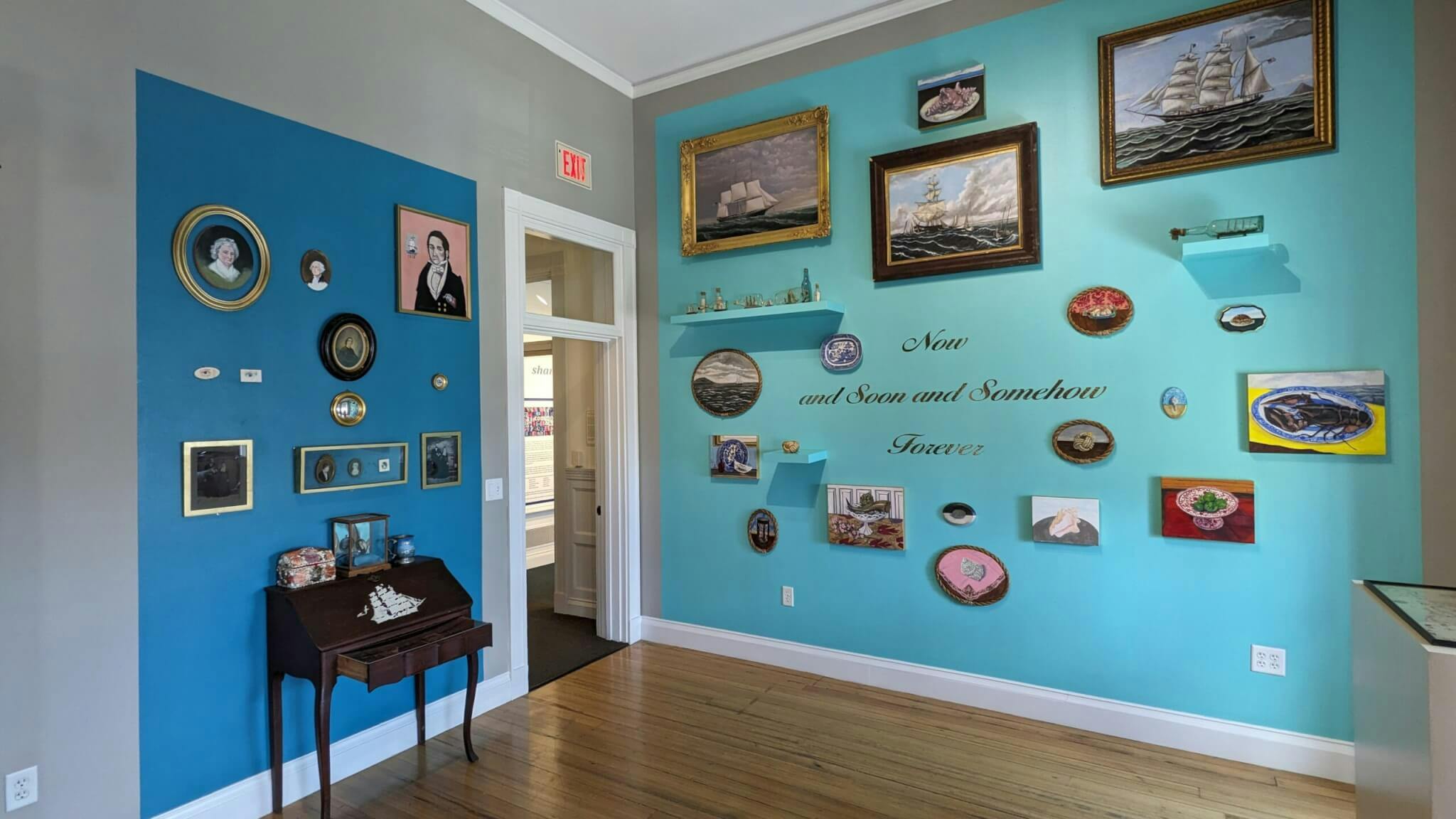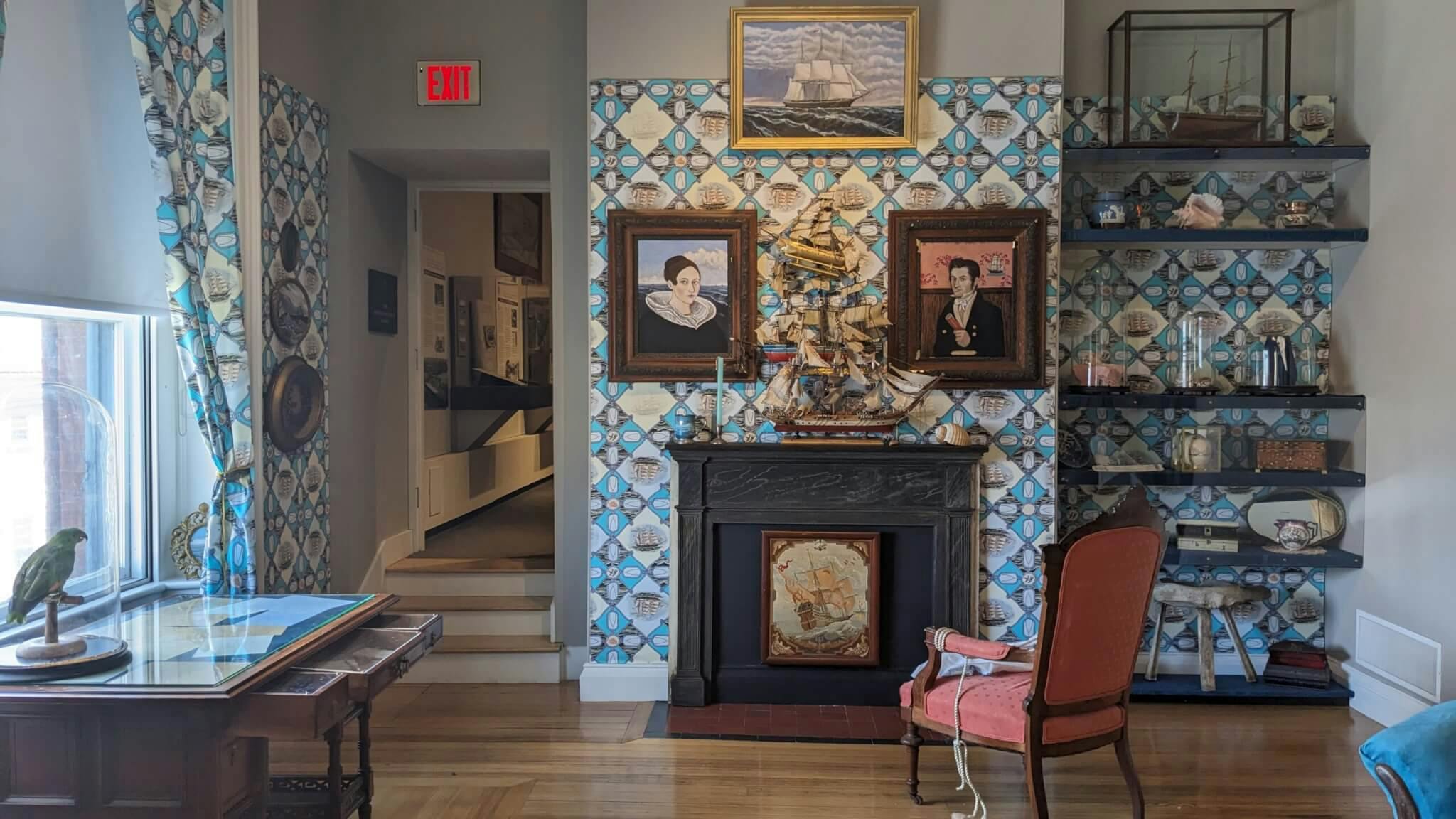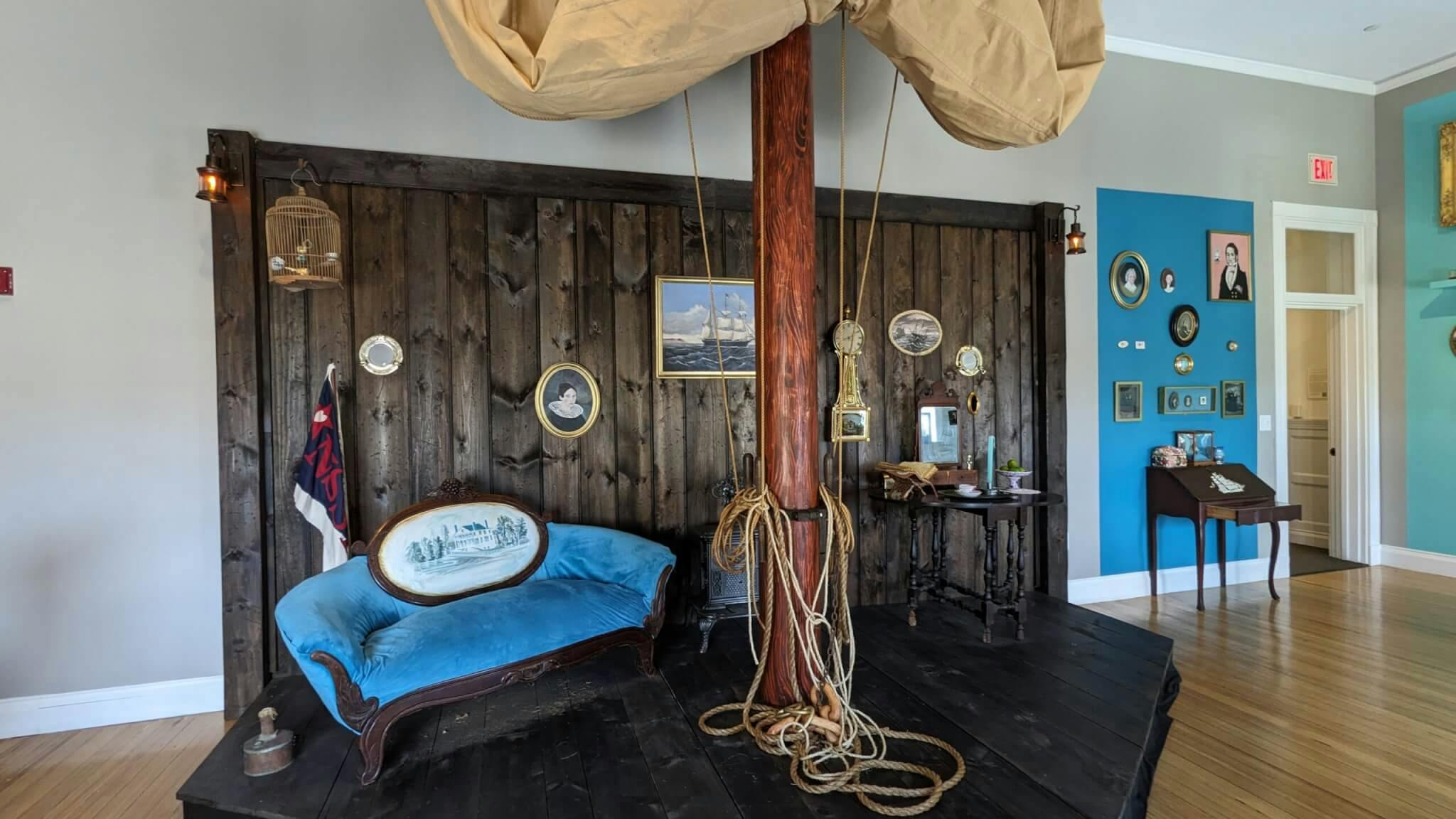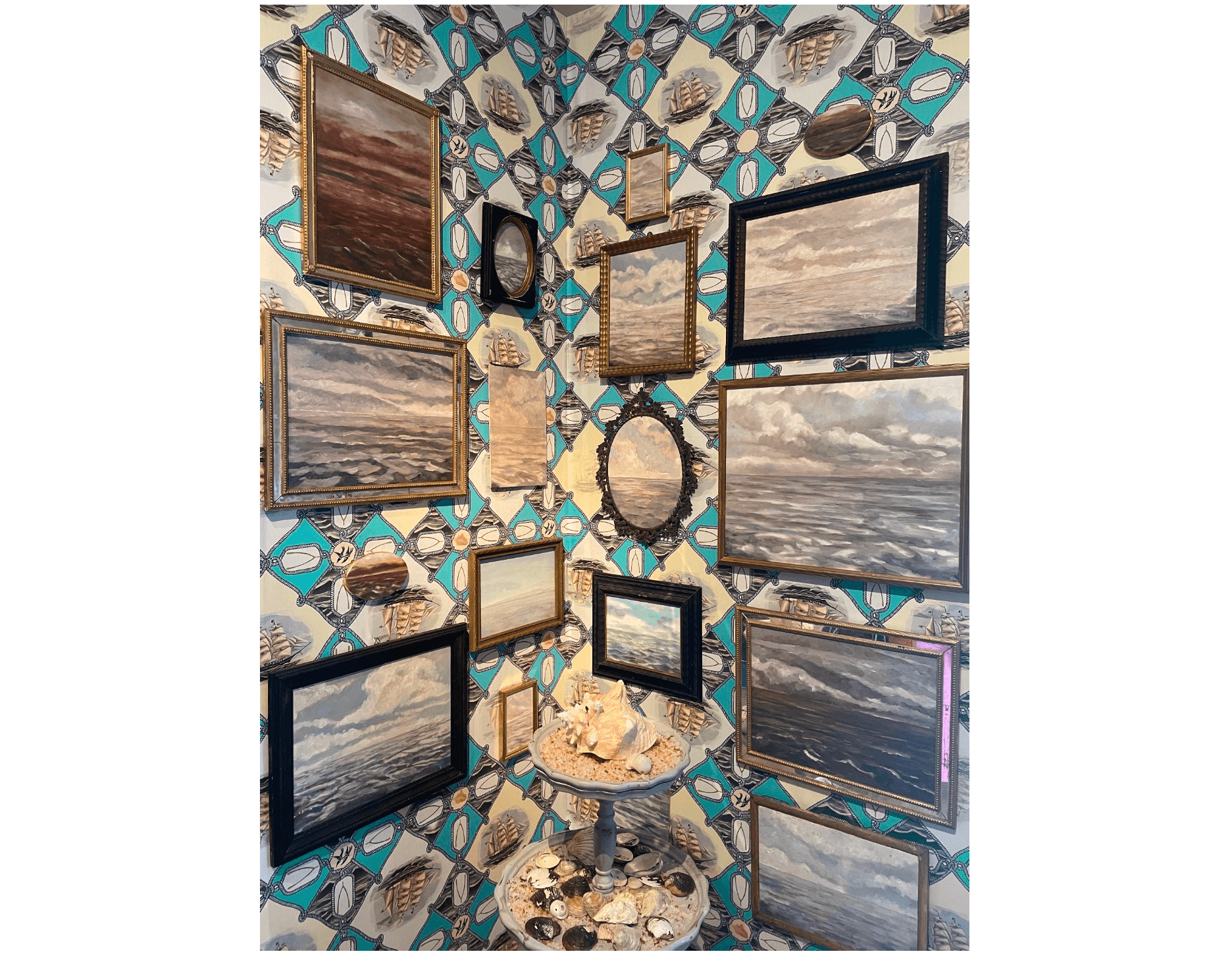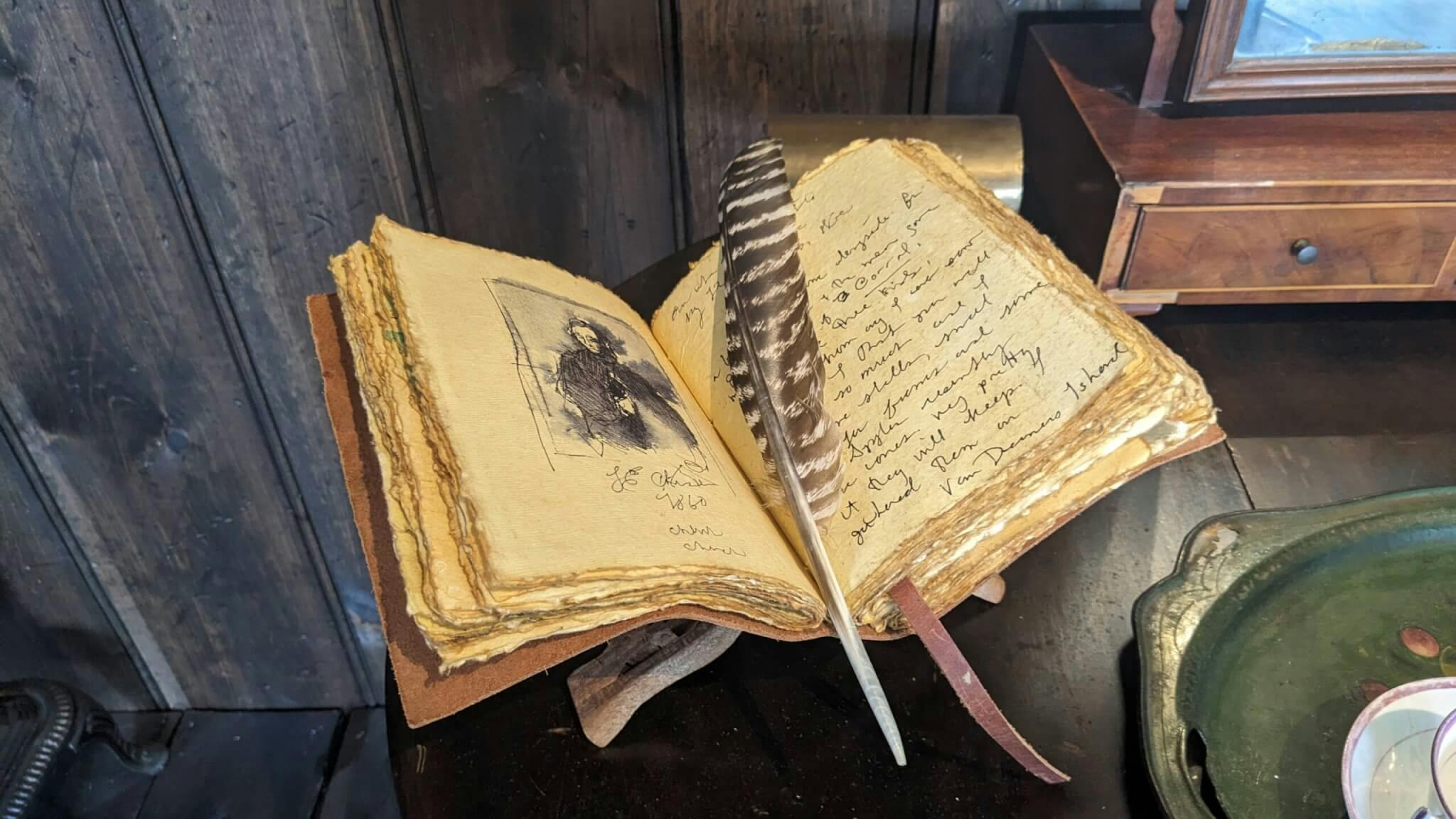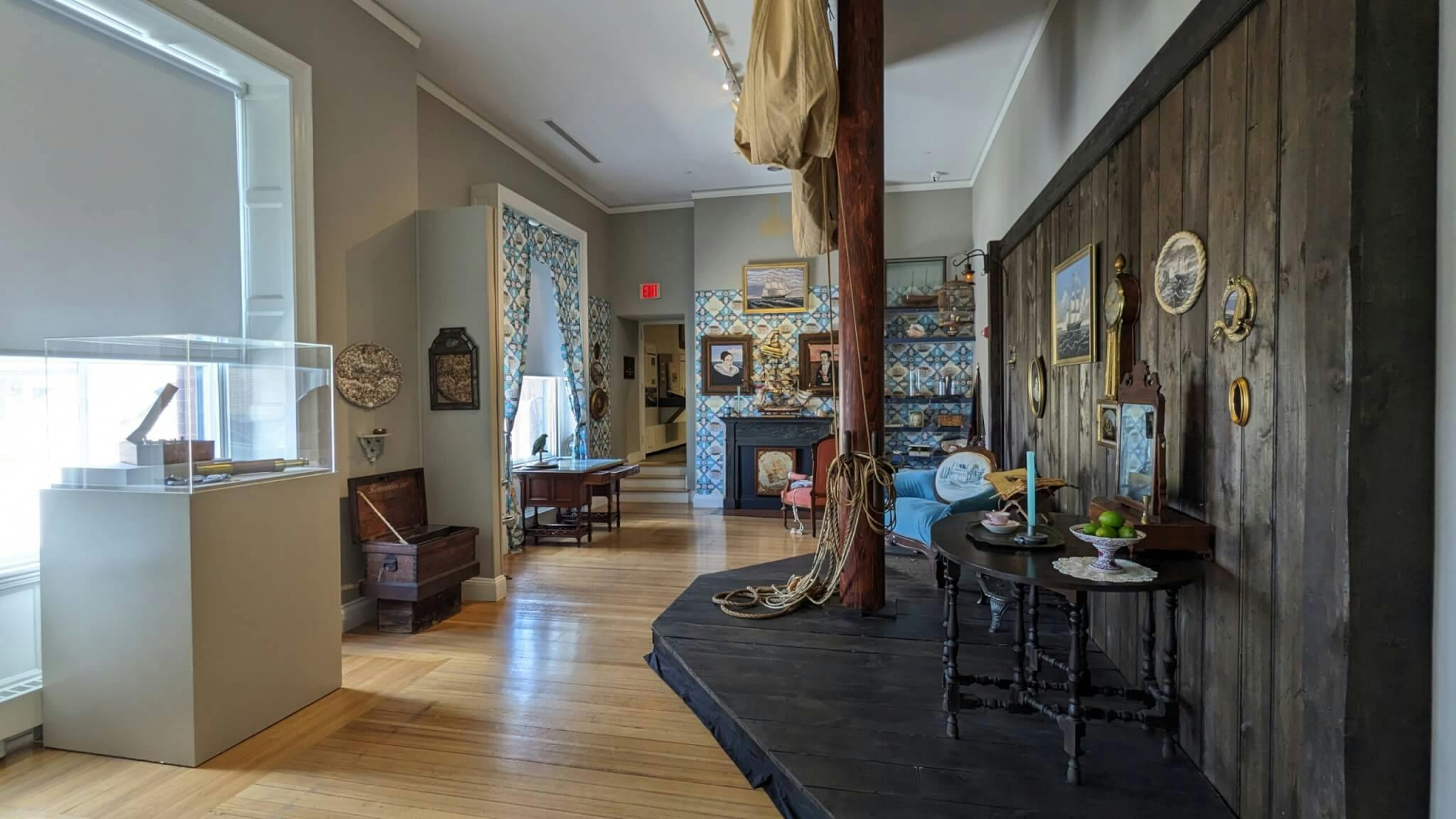At the New Bedford Whaling Museum, the past feels near and close to the surface. The cobblestoned streets and period architecture of the city where the novel Moby-Dick was set accentuate the museum’s focus on the bygone whaling industry that dominated the region in the eighteenth and nineteenth centuries. The display style of its collections also harmonizes with this history. In many galleries, scores of items such as scrimshaw, silhouette portraits, tools, and dolls stand behind glass, and both small and to-scale models of ships anchor many of the exhibition spaces. The subjects of vernacular portraits gaze calmly at viewers beside arrangements of the clothing they once wore upon mannequins.
The nineteenth century haunts Massachusetts; it is beguiling, charming, and certainly holds histories ripe for atonement. At the Whaling Museum, the weight of collections shares evidence of the resources we overused, such as a room full of carved ivory. Meanwhile, this material culture connects us with memories, keeping grief, love, and hope alive. Remembrance is the theme of the show “Now and Soon and Somehow Forever,” in the Herman Melville room, closing on November 26. This mixed-media installation by Massachusetts-based artist Candice Smith Corby and Italy-based artist William Pettit uses the site as medium, because although they created a large proportion of the art, the installation appears at first to seamlessly blend with the objects and salon-style presentation of the museum’s permanent collection. Indeed, their art and selected works from the museum coexist in the space. “Now and Soon and Somehow Forever” is hyperfocused on time as expressed by surroundings, specifically the nature of how time passes while your mind is on a person who is far away. The tick of an antique clock can be heard during a still moment in the gallery.
Pettit and Smith Corby are partners in life as well as art, and the longing they speak of is both metaphorical and literal, as they reside on separate continents with the Atlantic Ocean between them. In 2019, they founded The Bottega Projects, an artist residency in Italy. Pettit and Smith Corby both work in time-honored methods, from making hand-made paints with organic and mineral pigment to occasionally using the fresco technique. Smith Corby’s subjects are often quaint or humorous and reference historical American and European styles, such as miniature portraits and still lifes. Her most striking paintings blend precise trompe l’oeil realism with a flat and surreal depth of field. Pettit’s paintings communicate his love of language and contemplate opposing elements with patterns and grid-like networks of lines and scribbles. While their styles are distinct, they merge in this exhibition with recreations of still lifes, vernacular portraits, and landscapes. They worked together on all aspects of the exhibition, culminating in a period room set simultaneously on a ship and within a home.
Smith Corby’s strong painterly range bridges varied styles of realism, setting herself apart from many artists by making her paints. She painted a faux bois pattern on a load-bearing column in the center of the gallery. A raised wooden floor surrounds it, creating the effect of a ship deck. On one wall, beside a fireplace, shelves hold a combination of museum collections and smaller works Smith Corby and Pettit created. A standout object is an ostrich egg Smith Corby painted after one in the Whaling Museum’s collection. Under the banner “NSSE,” an acronym for the exhibition’s title, two ships meet at their figureheads, the point marked by a little heart.
The poetic title, “Now and Soon and Somehow Forever,” alludes to this playfulness with time. It is cyclical, like the movement of tides. Pettit’s painterly style, while often representational, lists more toward abstraction than Smith Corby’s. He painted more than a dozen seascapes in assorted vintage frames in one of the most striking parts of the exhibition. The seascapes are installed in a corner, assembled in a neat scatter over whimsically patterned wallpaper. The horizon lines are consistently centered in the composition. This accumulation connects the action of representing the shoreline and the habit of doing so. It conjures a sense of reverie, recalling Hiroshi Sugimoto’s photographic seascapes from the 1980s through the 1990s contemplating how the sea both repeats and endlessly varies. Additionally, the unyielding focus on the water’s surface is the subject of Roni Horn’s 1999 lithographic series Still Water (The River Thames, for Example). The ocean appears today as when the first letter in the museum’s archives was written: groundless, moon-influenced, both dangerous and alluring. The sea was a means of making a living, but its sheer scale, especially given eighteenth- and nineteenth-century travel methods, caused long periods of separation.
The things the artists made, collected, and integrated from the museum collection aesthetically blend together, yet the point of their endeavor is not to trick the viewers or to create riddles to be solved, although it could be approached this way. Rather, it appears that they sought a way to collapse time to plumb one of life’s greatest mysteries—how we cope with the absence of a person who we adore. Smith Corby and Pettit’s process included reading letters to each other of a couple parted by the sea, a recitation that enabled them to get close to the voices of the shorebound wife and the seafaring sailor. One of the letters included a note that it was the last message ever received from the sailor. Copies of the letters appear on a desk by a window with a beautiful view of the ocean framed by a cobblestoned street and square brick buildings from which vintage business signs hang. Looking beyond the land-bound scenery, the ocean glows a vivid blue. Like many before me, I watched the water instead of embracing my loved one. The fathomlessness of the ocean can be compared to the potency of true love, yet this is also what separates people. The oppositions—beauty and danger—are tethered with a constancy that transcends the centuries.
“Now and Soon and Somehow Forever” is on view at the New Bedford Whaling Museum through November 26, 2023.
